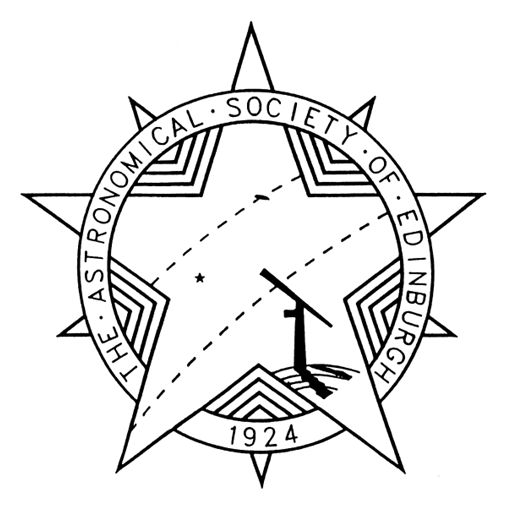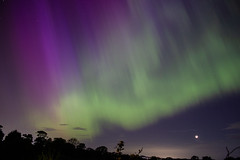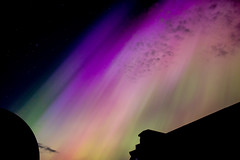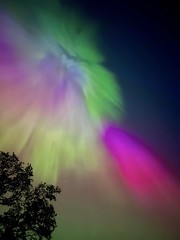Monthly Archives: March 2016
Scotland’s Sky in March, 2016
Jupiter conspicuous at opposition in Leo

The maps show the sky at 23.00 GMT on the 1st, 22.00 GMT on the 16th and 21.00 GMT (22.00 BST) on the 31st. An arrow shows the motion of Jupiter. Summer time begins at 01.00 GMT on the 27th when clocks go forward one hour to 02.00 BST. (Click on map to enlarge)
The Sun, now climbing northwards at its fastest pace for the year, crosses the equator of the sky at 04:30 GMT on the 20th, the time of our vernal equinox. It then rises due east and sets due west, and days and night are equal in length around the globe.
The Sun’s progress means that our nights are falling rapidly later, an effect that appears to enjoy a step-change when we set our clocks forward to British Summer Time on the 27th, though, in this instance, the daylight we gain in the evening is lost in the morning. It is noticeable, too, that the stars at nightfall are shifting quickly to the west. Orion, for example, dominates in the south as darkness falls at present, but has tumbled well over into the south-west by the month’s end.
The Plough is nearing the zenith at our map times and it is the squat figure of Leo the Lion and the prominent planet Jupiter that dominate our southern sky. Jupiter is edging westwards beneath Leo’s hindquarters and passes just below the fourth magnitude star Sigma Leonis over the first few days of the month. Above and to its left is Denebola, the Lion’s tail, while further west (right) is Leo’s leading star Regulus in the handle of the Sickle. Algieba (see chart) appears as a glorious double star through a telescope.
Jupiter comes to opposition on the 8th when it stands opposite the Sun so that it rises in the east at sunset and is unmistakable as it climbs through our south-eastern evening sky to pass 40° high on Edinburgh’s meridian in the middle of the night. Eleven times wider than the Earth and yet with a day lasting under ten hours, it is 664 million km distant at opposition and shines at magnitude -2.5, more than twice as bright as any star other than the Sun.
View Jupiter through binoculars or a telescope, and the fun really begins. Binoculars show its four main moons, Io, Europa, Ganymede and Callisto, which change their relative positions to east and west of the planet’s disk from night to night as they orbit almost directly above the equator. Were it not for Jupiter’s glare, we could see all four of these with the naked eye.
With numerous sulphurous volcanoes, Io is the most geologically active body we know, while Europa is the only one of the four to be smaller than our Moon and is thought to harbour a deep ocean of water beneath its icy crust. This makes it so irresistible as a potential home for life that the US Congress has urged NASA to add a lander craft to a planned mission to Europa over the next decade.
The Jovian disk appears 44 arcseconds wide when we view it through a telescope at present. Even a small telescope shows its main cloud belts but the smaller cloud features that indicate Jupiter’s rotation are more of a challenge. The famous Great Red Spot in the southern hemisphere is a storm that has raged for at least 185 years but is now shrinking noticeably.
By the time Jupiter is sinking in the west before dawn, the two brightest objects low in the south are Mars and Saturn. Mars stands 18° to the right of Saturn and is slightly the brighter of the two at present – their magnitudes being 0.3 and 0.5 respectively, with both of them outshining the red supergiant star Antares in Scorpius which lies more than 5° lower and between them. The Moon stands above-left of Mars on the 1st, above Saturn on the 2nd, and above and between them both on the 29th.
This month Saturn improves only slightly to magnitude 0.4 and hardly moves in southern Ophiuchus, being stationary in position on the 25th. Mars, tracking eastwards from Libra to Scorpius, more than doubles in brightness to magnitude -0.5 as it approaches from 161 million to 118 million km. It also swells in diameter from 9 to 12 arcseconds and telescopes are starting to show surface features, including its north polar cap. There is no comparison, though, with the beauty of Saturn whose superb rings have their north face tipped Earthwards at 26°, near their maximum tilt, and stretch across 38 arcseconds. Saturn’s disk is 17 arcseconds wide and has much more subdued cloud belts than Jupiter.
Although Venus is brilliant at magnitude -3.9, we have slim hopes of seeing it deep in our south-eastern twilight for just a few more mornings. Mercury, already lost from view, reaches superior conjunction on the Sun’s far side on the 23rd.
The sunrise/sunset times for Edinburgh change from 07:03/17:48 GMT on the 1st to 06:45/19:50 BST (05:45/18:50 GMT) on the 31st. The Moon is at last quarter on the 1st, new on the 9th, at first quarter on the 15th, full on the 23rd and at last quarter again on the 31st.
New moon on the 9th brings the first and best of this year’s four eclipses when a total eclipse of the Sun occurs along a path that travels eastwards across Indonesia before swinging north-eastwards over the Pacific to end to the north of Hawaii. Surrounding areas enjoy a partial eclipse but there is nothing to see from Europe. The Moon slims the outer and lighter shadow of the Earth during a penumbral lunar eclipse on the 23rd. Also best seen over the Pacific, it is partly visible from most of the Americas and eastern Asia, but only a minor fading of the southern part of the Moon may be expected.
Alan Pickup



